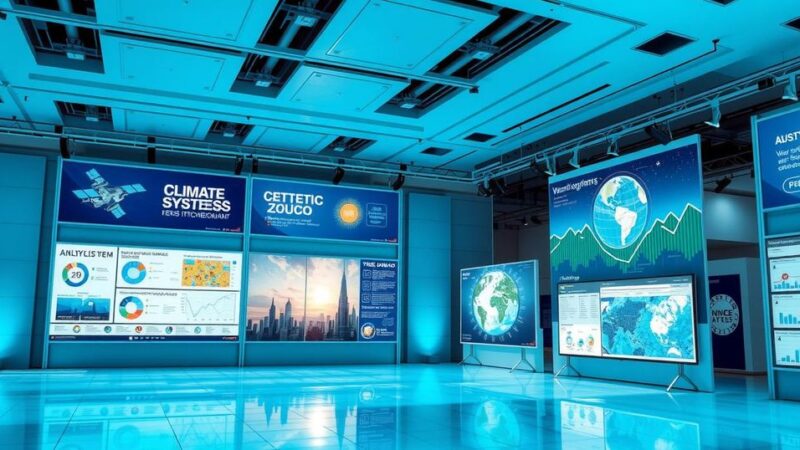Climate change is intensifying, outpacing the cooling effects traditionally offered by La Niña, according to climate scientists. The IMD forecasts an early summer with above-normal temperatures and extensive heatwave periods, following warm records and low rainfall observed recently. The relationship between jet streams, El Niño, and La Niña are discussed, emphasizing the anticipated challenges in a warming environment.
Recent assessments indicate that climate change is becoming increasingly severe, diminishing the cooling effects typically associated with La Niña in a warming world. The India Meteorological Department (IMD) has issued forecasts predicting an early summer accompanied by elevated temperatures and extended heatwave periods. Notably, February 2024 was recorded as the warmest since 1901, coupled with the fifth lowest rainfall since 2001.
Observations highlight that human-induced climate change is establishing a ‘new normal,’ characterized by warmer winters and shortened springs. This observation is coupled with the concept of ‘year-to-year variability’ in weather patterns. As Arpita Mondal, an associate professor at IIT Bombay, remarked, updates from the IMD reveal an unusually dry winter, which she notes impacts cooling via rainfall.
Raghu Murtugudde, an earth system scientist at IIT Bombay, commented on the phenomenon of global temperature anomalies during winter, stating that these anomalies are linked to jet stream fluctuations. These jet streams, strong winds in the atmosphere, significantly influence weather patterns. Mondal further indicated that shifts in jet streams during the pre-monsoon period correlate directly with heatwave characteristics, including both duration and intensity.
Vimal Mishra, a chair professor at IIT Gandhinagar, elaborated on the roles of El Niño and La Niña as contributors to prevailing climate trends. He explained that under El Niño conditions, warm springs are likely, whereas La Niña conditions yield cooler days. The El Niño-Southern Oscillation (ENSO) significantly impacts global weather patterns.
Recent announcements from the World Meteorological Organization (WMO) indicated that the weak La Niña emerging in December 2024 is anticipated to be short-lived. They also projected a 60 percent chance for La Niña conditions to emerge during mid-2025, just after ENSO-neutral conditions began in May 2024. Tempertatures during the March 2024-February 2025 period were reported to be 0.71 degrees Celsius above the 1990-2020 average, and 1.59 degrees above pre-industrial levels.
Temperature evaluations also show persistently high sea surface temperatures across many oceanic regions. Murtugudde suggested that the current state does not truly reflect La Niña conditions, noting the ongoing presence of warm temperature anomalies in critical areas of the eastern Pacific.
Expectations indicate that El Niño events may intensify in frequency and impact in the future, predicting that one in two of these events will be extreme. The current 2023-24 El Niño is recognized among the most intense in recorded history, contributing to global temperature rises and extreme weather incidents, including 536 days of heatwaves in India during the summer of 2024.
Mishra added that irrespective of ENSO-neutral conditions—highly likely for the current year—intensified heatwaves must be anticipated, as evidence points towards significantly elevated temperatures already in March. Furthermore, the WMO forecasts a 60 percent chance of ENSO-neutral conditions for the upcoming March-May 2025 period. Under ongoing climate change, the anticipated difficulties posed by an El Niño surpass potential relief previously offered by La Niña.
In summary, scientists indicate that climate change is rapidly intensifying, rendering traditional cooling effects of La Niña less effective. Current predictions reveal a concerning trend of heightened temperatures, significantly exacerbated by anthropogenic factors. With patterns of extreme weather becoming more frequent, the impact of El Niño is expected to increase, while La Niña may no longer provide the expected relief. Proactive measures and adaptations are essential to mitigate the overarching effects of climate change, particularly in vulnerable regions such as India.
Original Source: www.theweek.in






